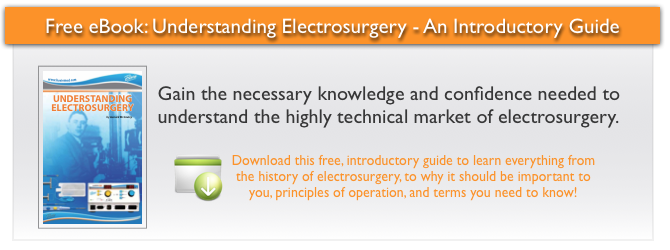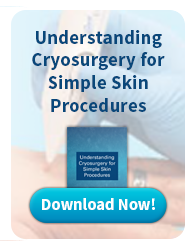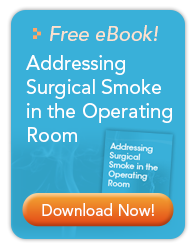 The Health Industry Distributors Association (HIDA) recently presented a webinar on this topic and, because Bovie Medical has had a longstanding relationship with its distributors, we want you to know about it and how it may affect you. We hope you will take time to carefully review the following.
The Health Industry Distributors Association (HIDA) recently presented a webinar on this topic and, because Bovie Medical has had a longstanding relationship with its distributors, we want you to know about it and how it may affect you. We hope you will take time to carefully review the following.
What is the Sunshine Act?
The Physician Payment Sunshine Act, also called the OPEN PAYMENTS program, is one of the many components of the Patient Protection and Affordable Care Act (PPACA). It has been touted as a means for creating greater transparency regarding the financial dealings between medical manufacturers and group purchasing organizations (GPOs), and the physicians and teaching hospitals that they have relations with. The purported intent of this act is to shine the light of day on the transactions that occur between the commercial creators of valued products and services and the medical recipients of those valuable items. This will then allow patients in the community at large an opportunity to review those transactions and determine in their own minds the extent to which that “transfer of value” potentially affects the clinical judgement of the physician or research team.
I’m a distributor, not a manufacturer. So how does this affect me?
The act addresses applicable manufacturers (AMs) and applicable group purchasing organizations (AGPOs) that provide Assistance and Support to “covered recipients”. It further identifies an Applicable Manufacturer as anyone who holds title to a given item of value including distributors, wholesalers, repackagers, relabelers and kit packers. Specifically, the covered items includes: “...any drug, device, biological, or medical supply that is eligible for payment by Medicare, Medicaid, or CHIP, either individually or as a part of a bundled payment (such as the inpatient prospective payment system) and that requires a prescription to be dispensed (for drugs and biologicals) or requires pre-market approval by or pre-market notification to the U.S. Food and Drug Administration (for devices, including medical supplies that are devices).” (1) (emphasis added)
So, even as a distributor, if at some point you hold title to a covered drug, device, biological or medical supply, you are considered to be an applicable manufacturer (AM) and potentially subject to the reporting requirements.
So who are the covered recipients?
The covered recipients are physicians and designated teaching hospitals. Physicians include:
Doctors of Medicine
Doctors of Osteopathy
Doctors of Dentistry
Doctors of Dental Surgery
Doctors of Optometry
Doctors of Podiatry
Doctors of Chiropractic Medicine
As far as the teaching hospitals are concerned, the CMS has prepared a list of 1165 designated teaching hospitals alphabetized by state. This list is subject to change and will be updated annually.
What is considered a “transfer of value”?
A reportable “transfer of value” is any Direct, Indirect or Third Party payment made to a covered recipient in support of a covered item. More specifically, it is the transfer of anything, the value of which exceeds $10.00 individually or $100.00 over the course of a year. This means that your sales rep can take a doctor to breakfast, talk about covered products and spend $9.99, including tax, once every month, but only for 10 months of the year, without it being reportable. If he or she takes that doctor to breakfast the other two months of the year, they cannot talk about any covered product. They can talk about golf or needlepoint or an OTC drug or device that does not require FDA approval, but not about one of the covered products, like the J-Plasma unit or the Aaron 1250. (Oops!)
Other types of payments include:
- Consulting fees
- Compensation for services other than consulting, including serving as faculty or as a speaker at an event other than a continuing education program
- Honoraria
- Gifts
- Entertainment
- Food and beverage
- Travel and lodging
- Education
- Research
- Charitable contributions
- Royalty or license
- Current or prospective ownership or investment interest
- Compensation for serving as faculty or as a speaker for an unaccredited and non-certified continuing education program
- Compensation for serving as faculty or as a speaker for an accredited or certified continuing education program
- Grants
- Space rental or facility fees (teaching hospital only) (2)
How am I supposed to keep track of this?
Funny you should ask. Actually, the feds have addressed that by developing two mobile apps for documenting the required information. One is the Open Payments Physician App for physicians and teaching hospitals and the other one is the Open Payments Industry App for applicable manufacturers and GPOs that your reps can use when calling on the docs. Both apps are available for iPhone and Android platforms. You can find more information here.
In addition, the CMS has developed specific templates for reporting non-research payments, research associated payments and investment/ownership interests.
When does all this reporting need to happen?
Data collection for 2013 needs to have started as of August 1st continuing through December 31, 2013, and needs to be reported by March 31, 2014. CMS will then post that data on a public website by September 30, 2014.
What happens if I don’t file these reports?
The CMS Fact Sheet for Applicable Manufacturers states that, “Civil monetary penalties (CMPs) may be imposed for failure to report information in a timely, accurate, or complete manner. The following penalties apply to each applicable manufacturer:” (3) An inadvertent failure to report a payment will incur at least a $1,000 penalty, but no more than $10,000 with an annual maximum of $150,000. A knowing failure to report is subject to a $10,000 minimum penalty, up to $100,000, with an annual maximum of $1,000,000. A combined maximum for reporting failures by a given reporting entity is capped at $1,150,000.
So download the apps and collect the data, get the templates and report the information and spend your money on taking title to Bovie Medical products instead of paying Civil Monetary Penalties.
Image courtesy of: imagerymajestic/ Freedigitalphotos.net








